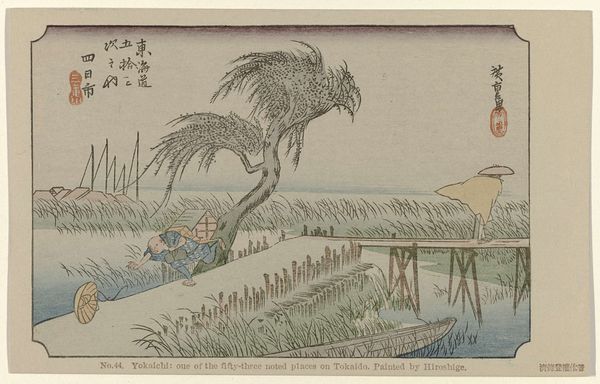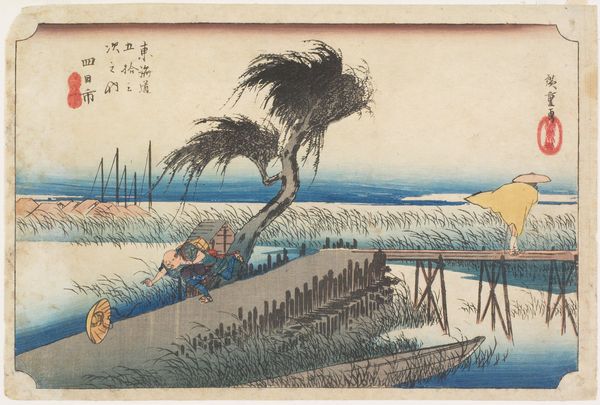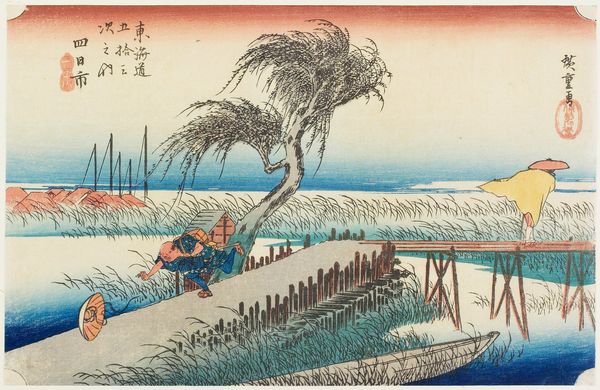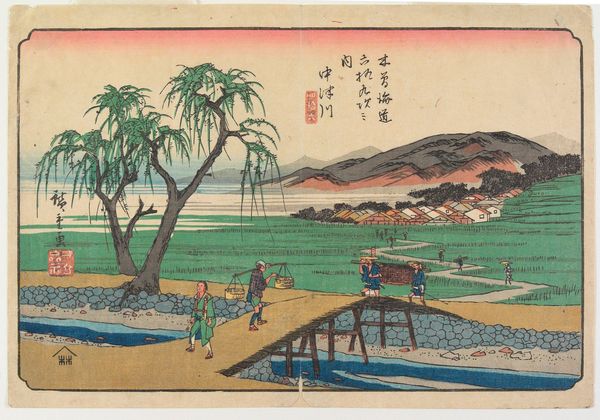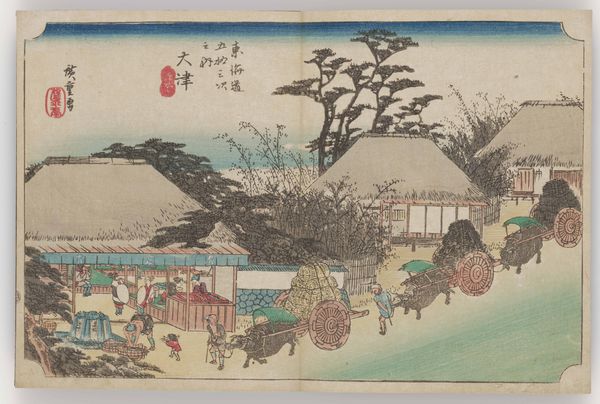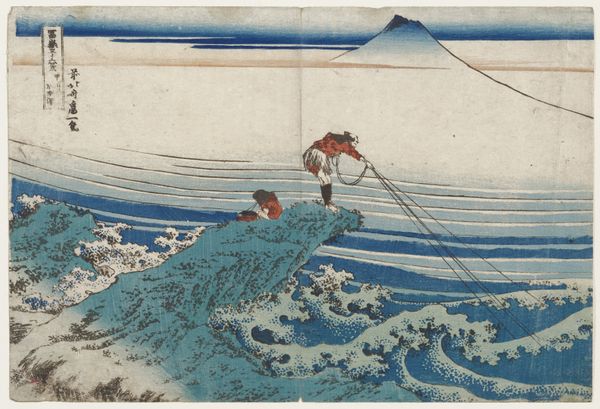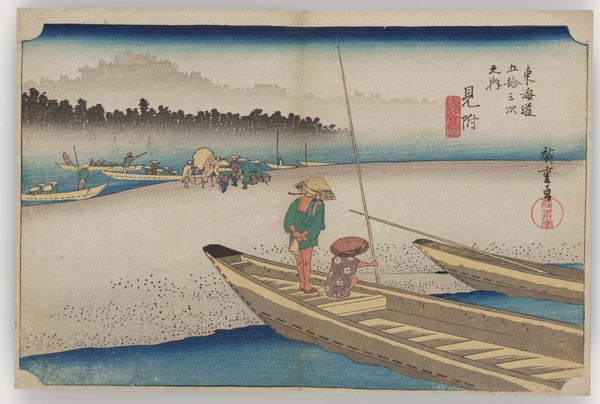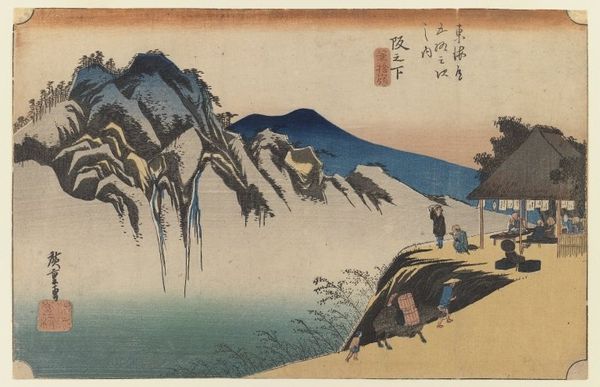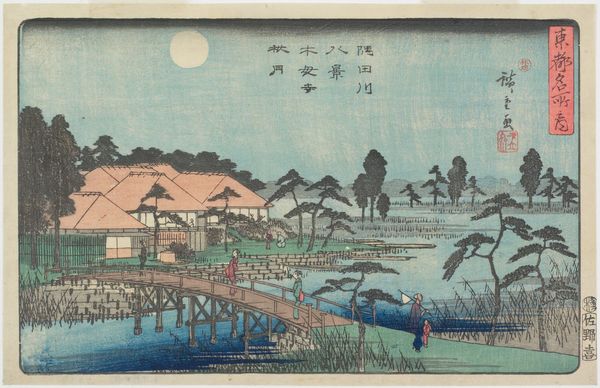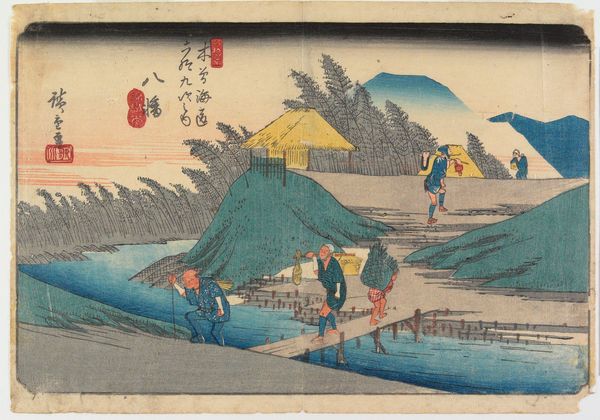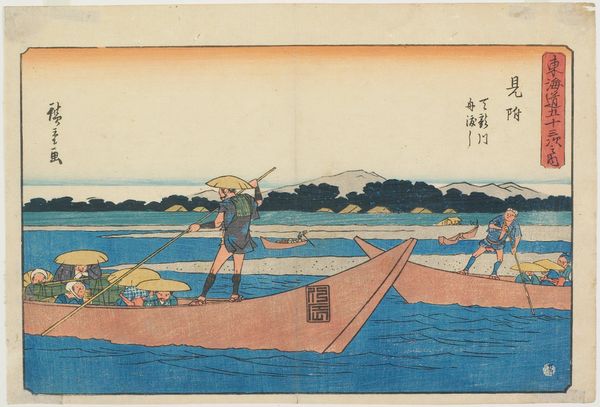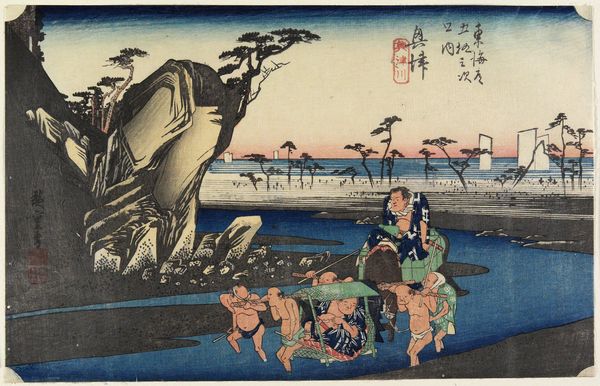
print, ink, woodblock-print
# print
#
asian-art
#
landscape
#
ukiyo-e
#
ink
#
woodblock-print
Dimensions: 9 1/2 × 14 1/4 in. (24.13 × 36.2 cm) (sheet, horizontal ōban)
Copyright: Public Domain
Editor: This is "Yokkaichi--Mie River" a woodblock print by Utagawa Hiroshige, dating to around 1832-1833. It depicts a traveler struggling against the wind. What do you see in this image beyond a snapshot of daily life? Curator: Well, look at the bent willow tree. It's a loaded symbol. On one level, it speaks to resilience, of bending but not breaking in the face of adversity. Do you notice anything about where that willow is placed in the composition? Editor: It seems to lean protectively over the traveler. Almost as if sheltering him. Curator: Exactly. The artist cleverly uses the tree’s shape to visually echo the traveler's struggle. More profoundly, it can symbolize the interconnectedness between humanity and nature; the figure depends on nature’s gifts. This image could act as a metaphor for the human experience more generally, of life’s constant winds of change. Notice how the traveler on the bridge, with his cloak acting like a sail, seems to be riding with the wind instead of fighting it. Editor: That’s fascinating. I didn't notice the symbolism before. Curator: What did you think the artist was saying through the detail of the dropped hat rolling along the road? Editor: Perhaps that material possessions don't matter so much in the grand scheme? Maybe he had to let it go so as not to lose even more precious things. Curator: Precisely! It becomes a potent symbol of sacrifice and prioritization in the face of overwhelming forces. Everyday scenes can have the most enduring symbolism. Editor: It’s amazing how much meaning is packed into such a simple image. I will never look at woodblock prints the same way.
Comments
No comments
Be the first to comment and join the conversation on the ultimate creative platform.
